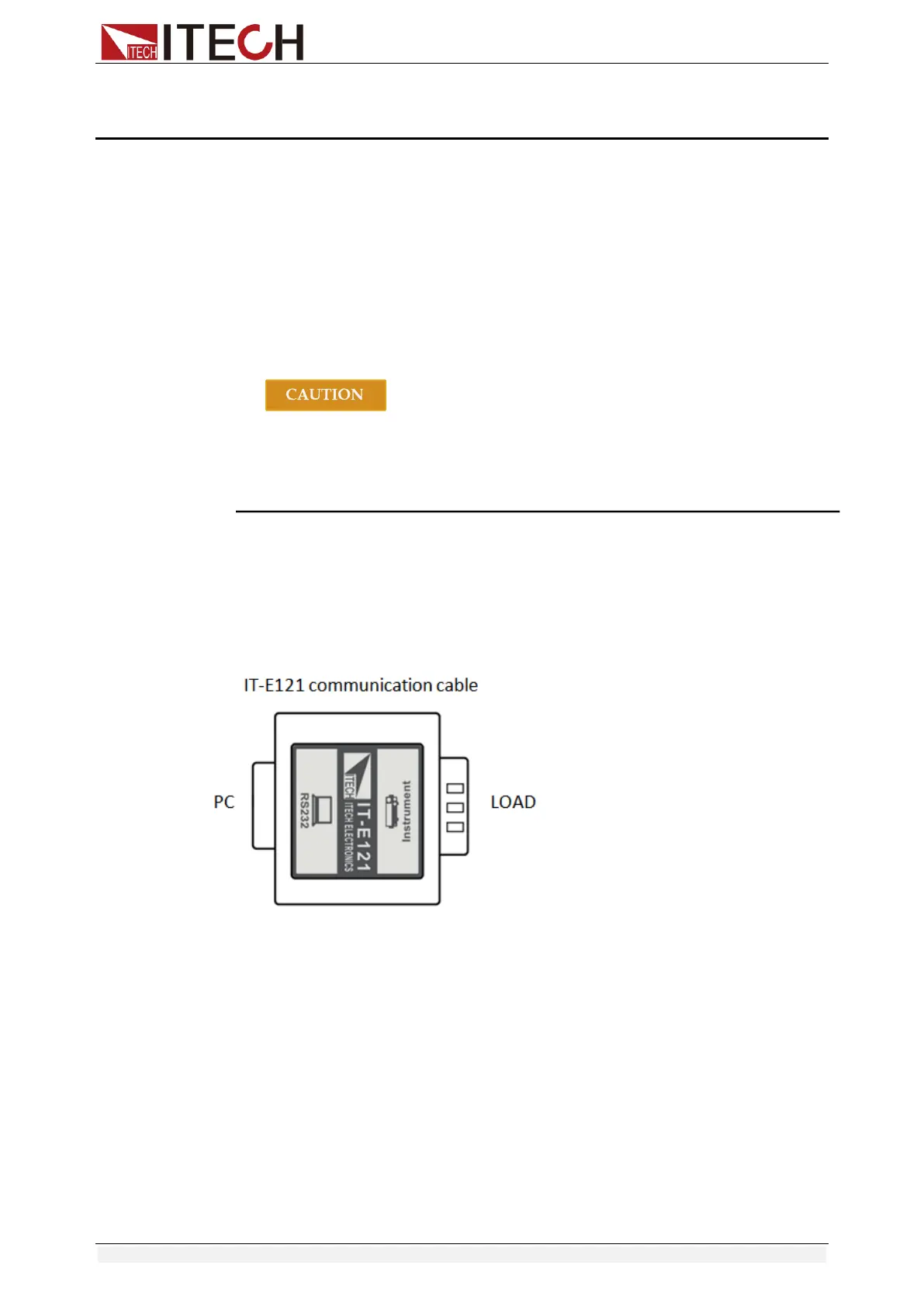Communication Interfaces
Copyright © Itech Electronic Co., Ltd. 66
Chapter6 Communication Interfaces
6.1 Communication Modules Introduction
DB9 in the rear panel of the DC load IT8511+/IT8511A+/IT8511B+/IT8512+
/IT8512A+/IT8512B+/IT8512C+/IT8512H+/IT8513A+/IT8513C+ is TTL level,
which can be connected to the serial port of the PC through the level
conversion of the accessory.
The communication module is IT-E121/IT-E121A/IT-E122/IT-E123.
The IT8513B+/IT8514B+/IT8514C+/IT8516C+ comes standard with RS232
and USB communication interfaces.
Please do not connect the standard RS232 cable to the
IT8511+/IT8511A+/IT8511B+/IT8512+/IT8512A+/IT8512B+/IT8512C
+/IT8512H+/IT8513A+/IT8513C+ electronic load, which may
damage the instrument.
IT-E121 Communication Module
The DB9 interface connector on the rear panel of the DC load is TTL voltage
level; you can use the communication module IT-E121 and a standard RS232
extension cable to connect the DB9 interface connector of the DC load and the
RS-232 interface connector of computer for the communication.
IT-E121A Communication Module
The DB9 interface connector on the rear panel of the DC load is TTL voltage
level; you can use the communication module IT-E121A and a standard RS232
extension cable to connect the DB9 interface connector of the DC load and the
RS-232 interface connector of computer for the communication.
IT-E121A is derived on the basis of IT-E121, the main difference between them
is that the DB9 interface connector of the RS232 changes from female to male,
so that can be directly connected to the standard LAN interface.
IT-E121A communication cable

